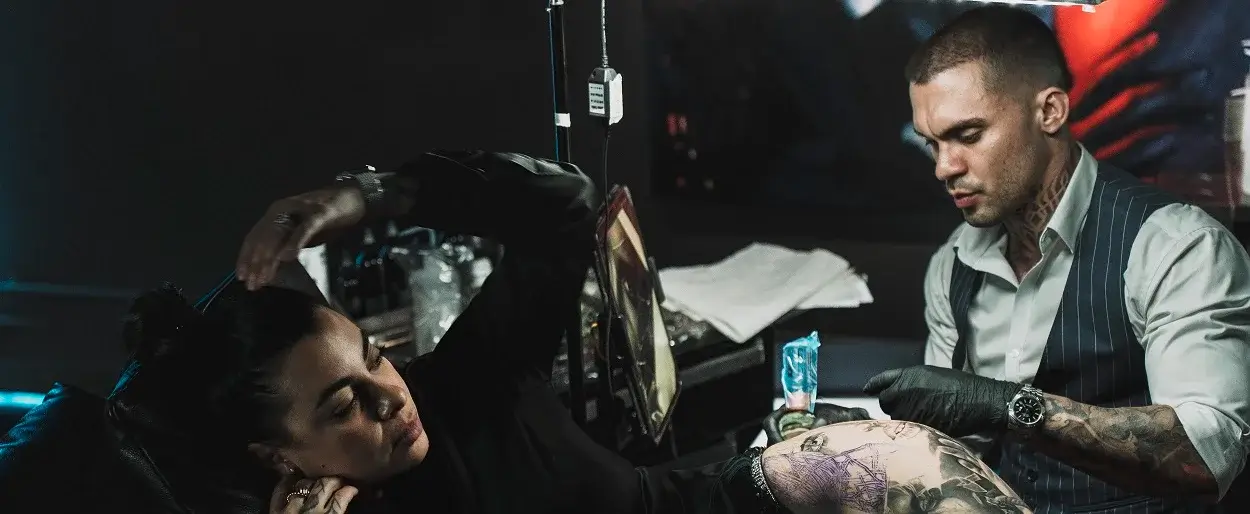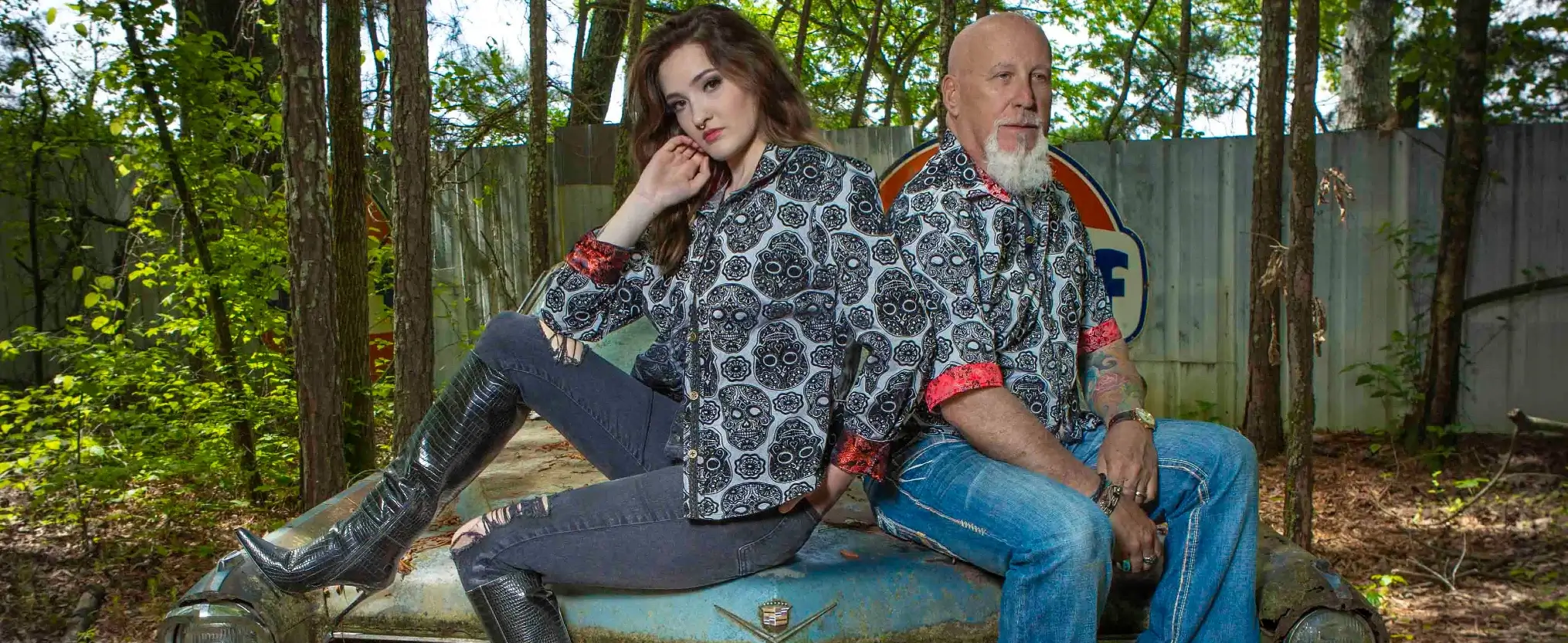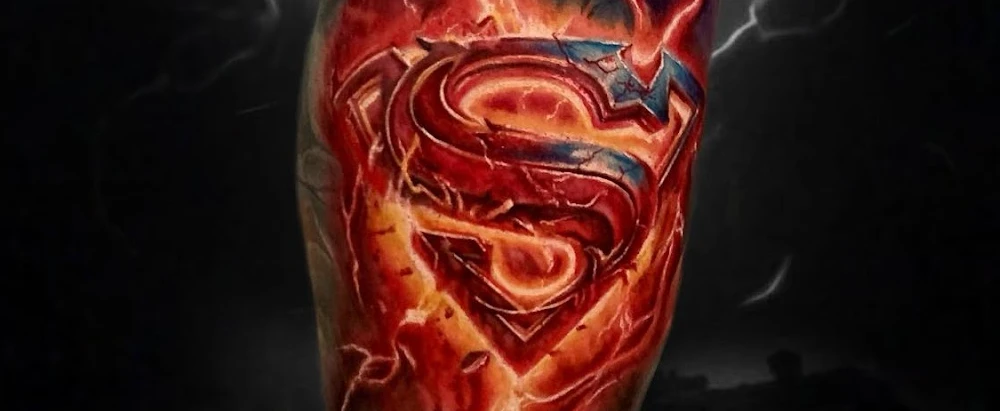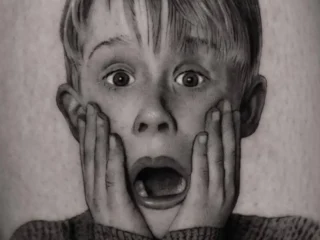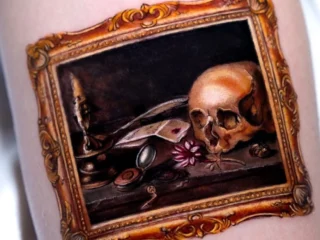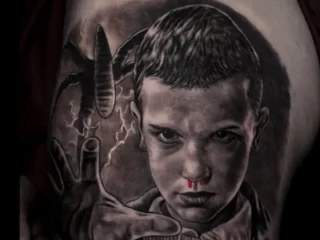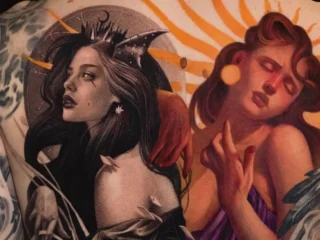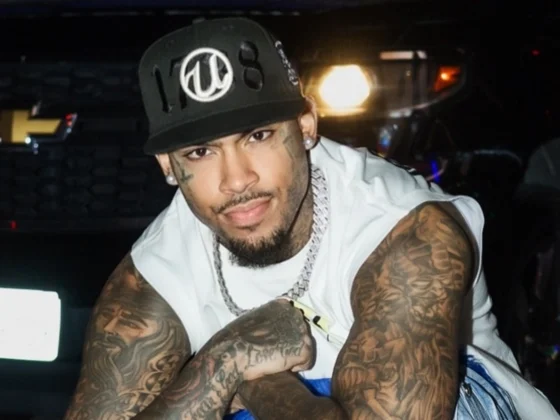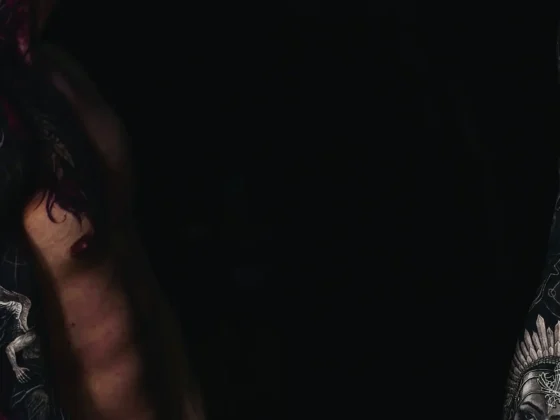Inked Mag Staff
August 20th, 2015
Tattoo U – Miguel Torres Brings Tattoo Art to the College Classroom
We hope the world of higher education is prepared because the barbarians are about to kick in the gates—tattooing is going to college. Purchase College in Westchester, N.Y. will be…
We hope the world of higher education is prepared because the barbarians are about to kick in the gates—tattooing is going to college. Purchase College in Westchester, N.Y. will be offering a full course in tattoo illustration. Making things even cooler is the fact that the class won’t be taught by a random art professor but by Miguel Torres, also known as Migz Tatz, a Brooklyn tattoo artist. Not only does Torres love tattooing, but he also loves exploring all sorts of art media. Major projects working with notable brands such as Ecko Unltd, Zoo York, and even the Wu-Tang Clan fill his resume, we think he is more than qualified to share his creativity. Being a Purchase graduate, Torres was tremendously happy to fill us in about his upcoming teaching venture with his alma mater.
https://www.instagram.com/p/5xzFhaEyqU
How did you and Purchase come together to create this class? I attended Purchase for my undergrad BFA in Fine Art. I maintained contact with the school and got word that they were possibly looking for someone to teach life drawing and summer classes through the School of Continuing Education & Liberal Studies. I had this idea for the Tattoo Illustration course brewing for a while and decided to present them with it. They were really excited and forward thinking enough to take the course on.
Have you ever taught any sort of class in the past or will this be your first? I have given private lessons in life drawing and painting to individual people. I have also taught art to kids. However, this will be my first experience teaching groups of adults this sort of content. So, this is a new endeavor.

What specific topics about tattooing are you going to be covering? We will be surveying different genres of tattoo art: black and grey, american traditional, dot work, new school, Japanese traditional, and several others. The students will watch videos, read articles, and look at pictures of work from artists who are known for a particular style. Then, we will have a discussion about its defining characteristics. Students will be randomly assigned a tattoo (subject) and will have to design in that particular style. Finally, they will have group critiques to help refine the work for their portfolio.
Just to be clear, you are teaching the tattoo theory aspect (what makes a good tattoo) rather than the physical, trade aspect of it (putting a machine together, tattooing fake flesh) correct? At no point will students be given instruction on or about machines. However, they will be shown how to use tracing paper to trace the area of a body part, so that it can be used to conform to the tattoo design. They will also be shown how to transfer and reproduce images from one paper to another, in a similar fashion of applying a tattoo stencil and following a reference to draw.
Tattoo history and theory will be the brunt of the course, but there will be time spent on certain drawing skills and techniques that simulate the transfer and application process. It will provide good practice with skills that could be used one day in an actual tattoo process.

If this class turns out to be extremely successful would you teach it again or perhaps add more advanced classes? I would gladly teach this course again as I truly believe there is a need for it in art schools. Trying to go about looking for a tattoo apprenticeship can be frustrating. Some art schools help students prepare illustration portfolios for different areas of concentration, like fashion, children’s books, etc. Why not tattoos? Why not give guidance and support to someone who is looking to make it a career?
This course covers a wide range of genres but does not delve into any particular one deeply. There is plenty of room for follow up or related courses that can focus on one style of tattooing. There could easily be a tattoo art history course as well.
During college courses, professors sometimes bring in speakers to give their students another person’s point of view on the subject. Will you be bringing in people from the industry? I do not currently have anyone scheduled to come in and speak, however there are plans in the works to go to the Westchester Tattoo Convention as a field trip. It will be taking place very close to the school, during Oct 16-18, 2015. If the opportunity arises, I would love to have a guest speaker. Preferably a street shop artist for this course so that they could express what it is like to work day in/day out with walk in clients. Also, they could explain how a tattoo artist (particularly one starting out) has to try and gain experience with as many styles and techniques as possible.

If you could bring anyone from the tattooing industry into your class, who would it be and why? If I had the choice of any one artist in the entire industry I would probably choose Freddy Corbin. He is a legend in the business. He could really offer a great perspective. Corbin is also a versatile artist. He comes from the school of artists that had to know how to tattoo anything. If you look at his years of work you can definitely see variety.
What is your favorite medium to work with? I sort of jump between mediums, I go a couple of months with oil painting, then switch to pastel, then digital. I am currently in my white charcoal phase. Most of my recent work has been in white charcoal. I love the effects and mood I can achieve with it.
I must add that the students will be working with a limited range of mediums in the class. We will focus on colored pencil, graphite, and felt tip markers as I believe their technique to be most closely related to tattooing.
What message are you trying to relay to your students? The message I want to relay is that tattooing is really, really, really difficult and it takes an enormous amount of preparation. Because of this, ideally, you should master the fundamentals of drawing before even thinking of transitioning to skin. Preparation is not just what you do once you start a tattoo. It’s all the years of dedication and study to art that lead up to it, during, AND after.

Are there any areas in your work that you feel you need to improve on? Absolutely. I can always stand to improve in all areas of my work. Particularly, I would say pacing myself. I struggle sometimes with managing people’s expectations of time. Some clients are under the impression that they can get large work done in one or two sessions. In my experience, the more I try to speed the process up, the more the quality suffers. So I spend a a lot of time educating the client on what my ideal process is, and how good quality takes time.
Understandably, this class would not take place of an apprenticeship in a shop, but how is this class similar? What skills that are part of an apprenticeship will be left out of this class? I believe many skills we are covering will definitely be transferrable. We will cover reproducing images using stencils, although on paper. Also, we will illustrate using different line widths to simulate the many needle sizes. We will create images using stippling similar to dot work tattoos. Pretty much all the drawing techniques associated to the many different styles of tattooing.
As I mentioned previously, students will also be assigned a tattoo design to create for a particular body part. They will have to trace that area using tracing paper, and then fit the drawing, all the while bearing in mind that they are designing for a rounded surface. Students will have to learn to be flexible and come up with designs on demand because the drawings will be assigned at random.
Even though the students will be learning a range of skills, there are so many things that come along with an apprenticeship that will not be covered by this class. Anything related to handling the tattoo machine, inks, needles, and skin, which is quite a lot. Also, we will not cover how to maintain a sterile environment and prevent cross contamination, which is critical. An apprenticeship requires tons of time and hard work but gives the apprentice a sense of respect for the craft. They also get to learn what a huge responsibility tattooing really is.

What are you most excited about for this course? I am most excited to watch everyone learn and grow. To teach those who have a genuine interest and want to share in the experience is beyond gratifying. It is inspiring to be surrounded by creativity. I really want the students to be successful and I hope that the course plays a part in that.
Have you heard of any other college classes about tattooing, or are you a pioneer? I am not the first to teach drawing related to tattooing. There have been plenty of seminars, workshops, and artist retreats that are known to those in the tattoo industry. However, to my knowledge, no other course like this has ever been offered by an institution of higher education. It’s another indicator of just how much the stigma of tattoos has eroded.
When you’ve told people about the class what has been the general reaction? Surprise? Excitement? I have received an overwhelming amount of positive feedback. People are really excited to see something like this come to fruition. Honestly, it’s overdue and everyone is behind it 100 percent.
Why do you believe this class is worthwhile, even for those who do not choose the career path of a tattoo artist? At it’s core, this is an illustration class. Tattoo art is the vehicle that we will use to improve drawing skills. A tattoo artist is still an artist, so everyone can benefit from the guided practice, exploration, and reflection. Even if you decide to do general illustration, or take on commission work, you still have to adjust to the needs of a client. So the more versatile you are, the more people you can work with.

Editor's Picks
Bridging Classical Art and Modern Tattooing
Esteban Rodriguez brings the discipline of classical fine art to the living canvas of skin, creating hyper-realistic tattoos that merge technical mastery with emotional depth.
Show Your Ink Fashions Brings Custom Style to Tattoo Culture
Show Your Ink Fashions creates custom shirts designed to showcase your tattoos as wearable art, blending fashion with personal expression.
The Ultimate “Superman” Tattoo Roundup: Just in Time for Superman’s Return to Screens
With Superman’s big return to theaters, fans are revisiting some of the most iconic ink inspired by the Man of Steel.


